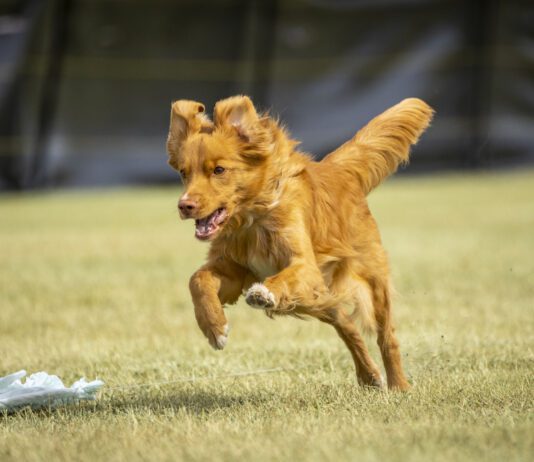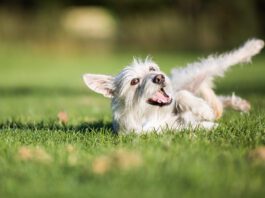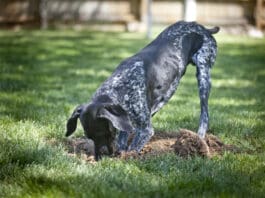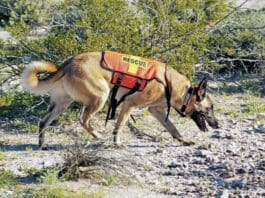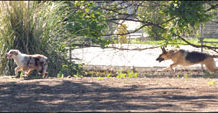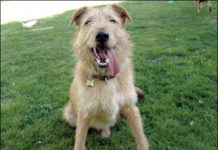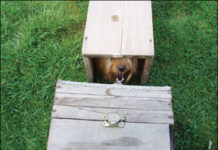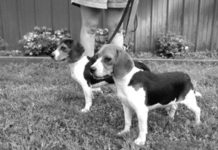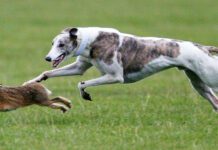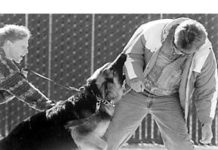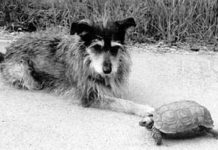Understanding Highly Predatory Dogs
I remember a day when I was waiting in the vet's office for my dog's appointment. The man sitting next to us started telling me, with beaming pride, about how his little white Westie had caught seven barn rats in the past week. I couldn't help but admire this cute, fluffy dog's superior hunting skills. Predatory behavior in dogs is something I respect. From following a scent trail, to stalking a bird, chasing a ball, or herding sheep, I am intrigued with the many forms predatory behavior manifests in our dogs; it is part of what makes dogs so amazing! But, predatory behavior is not so admirable (and much less socially acceptable), when, instead of it being a country terrier ridding a barn of rats or an Aussie herding sheep, it is your city dog chasing a skateboarder or the neighbor's cat.
DNA Testing for Mixed Breed Dogs
The sequencing of the canine genome, accomplished as a public research project in 2004, opened the floodgates to endless possibilities for canine genetic testing. The holy grail for many scientists engaged in this work is the understanding of, and ultimately, the elimination of inherited canine diseases. For many dog owners, though, the most exciting outcome of this serious work is the possibility that they can learn exactly what breeds their mutts are made of. Though there are already several commercial companies offering products that purport to be able to do just that, our assessment of the breed identification tests is that the results may be just as mixed as the dogs they seek to explain. The test results may be nearly as varied, interesting, and enjoyable as our mixed-breed friends, but it seems that, at least right now, they may not be able to absolutely satisfy the question of your mutts parentage. The tests are getting better every day, though! And as the understanding of DNA, the size of the sample databases, and the power of computers grow, its likely that the tests will, at some point, truly live up to the marketing hype currently being used to sell them.
Earthdog, An Underground Dog Training Activity
As long as there have been farmers and hunters, there have been “earth dogs.” Hardy, scrappy little dogs helped hunters tree squirrels, run rabbits to ground, corner foxes in their dens, and clear vermin from dwellings. As often happens, humans found a way to create competitive games from dogs’ natural abilities. For terriers and Dachshunds, a sport is born. Earthdog! Get that rat! As early as 211 B.C., mention was made of tiny rough-coated dogs used to follow animals into their burrows. Later, in the 1576 book De Canibus Anglicis, by Johannes Caius, the use of terriers was described in detail. In 1935, after many years of friends gathering together to test their dogs’ capabilities against those of their friends’ dogs, the Dachshund Club started offering trials modeled after German training for fox and badger hunting. This included building underground tunnels up to 50 feet long, with twists and turns along the way that required dogs to make decisions about which way to go to find their quarry. And it’s dark down there! In 1941 the Sealyham Terrier Club issued the first “working certificate,” which outlined requirements for dogs to search out woodchucks. In 1971 the American Working Terrier Association (AWTA) started artificial den trials in the U.S. By 1994, the American Kennel Club had launched its Earthdog program.
Your Dog’s Ability to Track Scents
Humans have taken advantage of dogs' incredibly keen sense of smell over the ages for such uses as hunting, tracking lost and fugitive humans, and more recently, the detection of bombs, narcotics, and other contraband. It's well known that a dog's nose is many times sharper than our own estimates range from 10,000 to 100,000 times superior to ours, with a far greater number and variety of scent receptors in their noses, more neurons linking the nose to the brain, and a greater proportion of their brains devoted to smell.
The Canine Predatory Instinct
given the chance. Blocking the dog's view will help.
Understand Your Dog’s Ancestral Instincts
when they were only acting on instinct without effective guidance toward acceptable behavior.üShy puppies should be exposed to a wide variety of situations, places, people and dogs to build confidence.üMost dogs signal an intent to bite before they do; most bites occur because someone misreads or ignores the dog's warning signs.
Is Your Dog Hiding a Talent?
All of our dogs are capable of far more than we ever ask of them. Their senses, especially their hearing and ability to smell, are so highly developed that they can perform feats that appear miraculous to us. Their physical abilities can cause us to gape in awe, as demonstrated by the prowess of highly-skilled Frisbee and Agility dogs. And they have all kinds of talents that, unless we look for them, we may never notice; hidden talents that reveal their versatility and breadth of their potential to think, reason and learn.
The Ancestral Dog Food Diet
Dog food as we know it today that is, either crumbly bits of kibble packaged in bags and boxes or gloopy meat-based concoctions sealed into cans was invented in 1860. Think about that for a moment. Our great-grandparents and great-great-grandparents raised dogs completely without the benefit of Purina. Before 1860, no one poured a pile of chow from a bag marked, Dog." Everyone who had a dog knew what dogs ate and how to feed them. "


